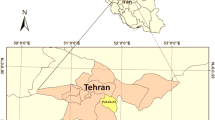Abstract
Development of maize (Zea mays L.) types that produce leaf area rapidly and finish vegetative development quickly would increase production of maize in mid- to short-season areas. The Leafy (Lfy1) and reduced-stature (rd1) traits each make contributions to this end. However, these two traits have not previously been combined. Our objective was to evaluate the morphological aspects of non-leafy normal-stature (NLNS), leafy reduced-stature (LRS), non-leafy reduced-stature (NLRS), and leafy normal-stature (LNS) maize inbreds. Two traits, Lfy1 and rd1, were incorporated into a series of inbreds, resulting in a range of canopy architectures. Twelve variables were recorded for each of 30 inbreds over three years. The 12 variables were: seed emergence, above-ear leaf number, below-ear leaf number, dead leaf number at tasselling, live leaf number at tasselling, total leaf number, above-ear leaf area, ear leaf length, ear leaf width, ear height, internode length, and plant height. Inbreds containing the Lfy1 trait had more above-ear leaf area, above-ear leaf number, dead leaf number at tasselling, total leaf number and number of live leaves at tasselling than non-leafy inbred lines. Below-ear leaf number was not different among LRS, LNS, and NLNS inbred lines. LRS and NLRS inbred lines were also not different for below-ear leaf number. Plant height, ear height, and ear leaf length and width were higher in normal-stature than reduced-stature plants. The proportion of the seeds which emerged was higher for LRS inbreds than the other trait groups.
Similar content being viewed by others
References
Bridgeland, W.T., 1980. Relationships between cornfield characteristics and spatial and temporal patterns of black bird damage in ripening field corn. MS Thesis, Cornell University, Ithaca, N. 88 pp.
Chase, S.S. & D.K. Nanda, 1967. Number of leaves and maturity classification in Zea mays L. Crop Sci 7: 431–432.
Coe, E.H., M.G. Neuffer & D.A. Hoisington, 1988. The genetics of corn. In: G.F. Sprague & J.W. Dudley (Eds.), Corn and Corn Improvement, pp. 81–258. 3rd edition, #18 Agron Series, Am Soc Agron, Madison.
Cross, H.Z. & M.S. Zuber, 1973. Interrelationships among plant height, number of leaves, and flowering dates in maize. Agron J 65: 71–74.
Daynard, T.B. & M. Tollenaar, 1983. Prospects for improving the productivity of early-maturing-maize. In: Communications au Coloque Physiologique du Mais. Royan, France, March 15–17. 1983: 535–570.
Dodd, J.L., 1977. A photosynthetic stress-translocation balance concept of corn stalk rot. Corn and Sorghum Res Conf Proc 32: 122–130.
Dronavalli, S., 1992. Genetics of stalk and seed quality traits in maize (Zea mays L.) with Lfy1 gene. PhD dissertation, Louisiana State University, Baton Rouge, LA.
Gardner, F.P., R.B. Pearce & R.L. Mitchell, 1985. Physiology of crop plants. Iowa State University Press, Ames, Iowa.
Hunter, R.B., 1980. Increased leaf area (source) and yield of maize in short-season areas. Crop Sci 20: 571–574.
Hunter, R.B., L.A. Hunt & L.W. Kannenberg, 1974. Photoperiod and temperature effects on corn. Can J Plant Sci 54: 71–78.
Muldoon, J.F., T.B. Daynard, B. van Duinen & M. Tollenaar, 1984. Comparisons among rates of appearance of leaf tips, collars, and leaf area in maize (Zea mays L.). Maydica 29: 109–120.
Nelson, O.E. & A.J. Ohlrogge, 1957. Differential responses to population pressures by normal and dwarf lines of maize. Science 125: 1200.
Nelson, O.E. & A.J. Ohlrogge, 1961. Effect of heterosis on the response of compact strains of maize to population pressures. Agron J 53: 208–209.
Shaver, D.L., 1983. Genetics and breeding of maize with extra leaves above the ear. Proc Annu Corn Sorghum Res Conf 38: 161–180.
Steel, R.G.D. & J.H. Torrie, 1980. Principals and procedure of statistics. McGraw-Hill, New York.
Tetio-Kagho, F. & F.P. Gardner, 1988. Response of maize to plant population density. I. Canopy development, light relationships, and vegetative growth. Agron J 80: 930–935.
Tollenaar, M. & L.M. Dwyer, 1990. The impact of physiology on the increase in productivity of maize: Perspectives and prospects. In: Vie du Mais, Int Maize Physiol Conf, Paris, France.
Author information
Authors and Affiliations
Rights and permissions
About this article
Cite this article
Modarres, A., Hamilton, R., Dwyer, L. et al. Leafy reduced-stature maize for short-season environments: morphological aspects of inbred lines. Euphytica 96, 301–309 (1997). https://doi.org/10.1023/A:1003006922761
Issue Date:
DOI: https://doi.org/10.1023/A:1003006922761




